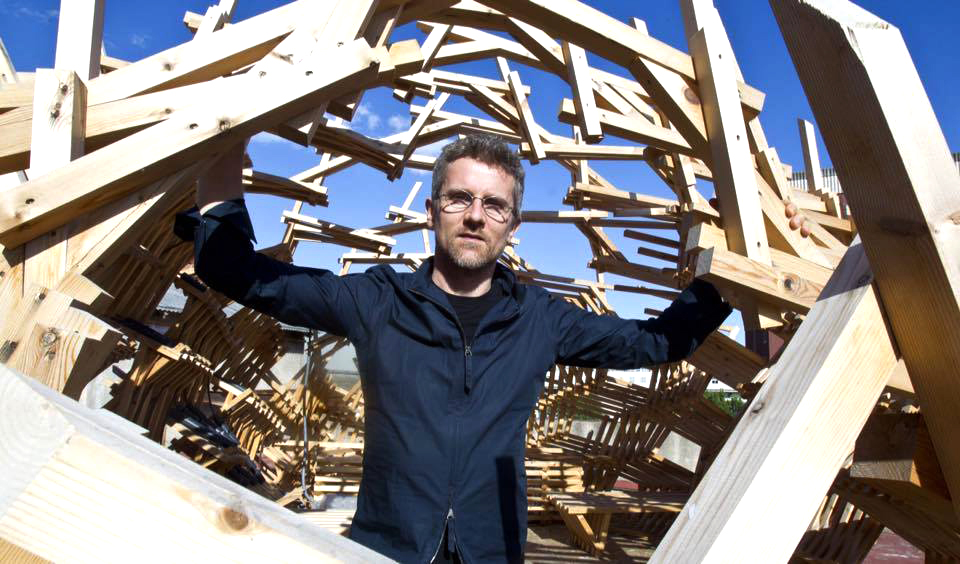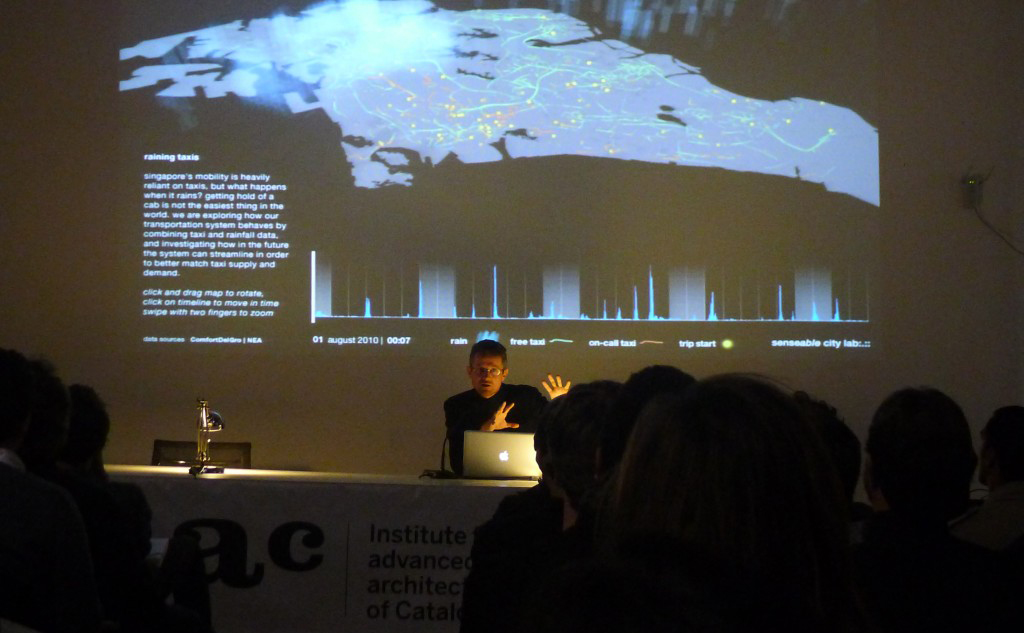
Carlo Ratti on IAAC’s Rooftop – OTF Pavilion
At the dawn of the digital revolution, it was widely believed that the Internet would dramatically reduce the importance of physical space. In 1995, some scholars went as far as predicting an imminent death of cities. Yet, history has proven the opposite. The world is urbanizing at an unprecedented rate, and radical advances in technology have sparked a redefinition of the urban environment at the convergence of bits and atoms.
Rather than killing the cities, technologies have opened new horizons of research. Digitally-augmented physical materials allow information transmission processes to be embedded into buildings and architectures. With almost any object potentially acting as a bidirectional communication interface, we are now witnessing the rapid growth of a responsive urban environment.
The increasing deployment of sensors and hand-held electronics in recent years is allowing a new approach to the study of the built environment. The way we describe and understand cities is being radically transformed – alongside the tools we use to design them and impact on their physical structure.
Last Monday’s lecture by Carlo Ratti addressed these issues from a critical point of view, through projects by the Senseable City Laboratory, a research initiative at the Massachusetts Institute of Technology, and the design office Carlo Ratti Associati.

Carlo Ratti Lecturing at IAAC – Seanseable Cities
Among the presented projects Real Time Rome, the Senseable City Lab’s contribution to the 2006 Venice Biennale, one of the first projects that aggregated data from cell phones, buses and taxis in Rome to better understand urban dynamics in real time, and show how technology can help individuals make more informed decisions about their environment.
Cloud Cast is a system that uses motion tracking and ceiling-mounted misting elements to provide people with a cloud of direct and localized cooling. The project explores how to make public spaces in cities like Dubai more livable and sustainable, by synchronizing human presence with climate control.
Carlo Ratti also presented his two projects for the EXPO Milano 2015: Earth Screening, the winning proposal for New Holland Agriculture’s Pavilion, featuring two self-driving tractors drawing on a large earth roof, and the Future Food District, an innovative Pavilion with facades drawn by the world’s largest plotter, exploring how digital technology can change our interactions with food and with human beings.
Advanced technology applied to design projects like Swish, a new prototype produced with CNC machines challenging the traditional stool concept, or Lift-Bit, the world’s first digitally-transformable and remotely controlled sofa, able to reconfigure the space in a myriad of combinations.
Monday was also the day of the final presentations of the Master in City & Technology‘s Senseable City Seminar. The course has been investigating on how digital technologies, as well as smart planning and the use of responsive sensors, can improve the quality of our public spaces, addressing the main challenges of tomorrow’s increasingly complex, interconnected society.
Drawing on Carlo Ratti’s experience at CRA and MIT Senseable City Lab, the course focused on a series of case studies which provided clear examples as base for the development of a final design project.